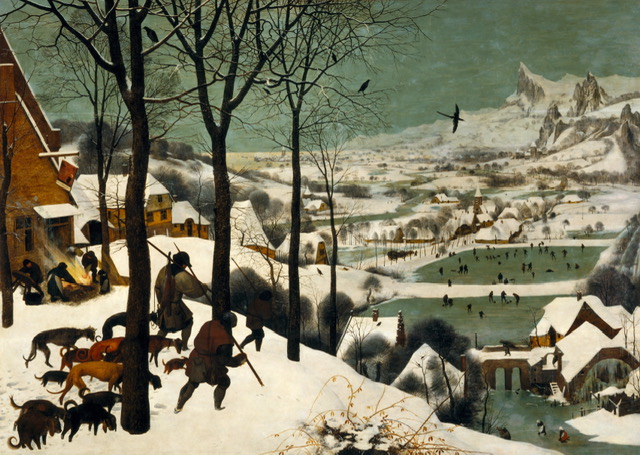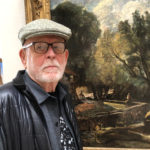Charles Tarlton
In the Valley View1

sense the single viewer. The work is never an object other than viewed which view? One is never just the other
I view the painting and (for as long as I am looking at it, or what I, for a time, remember about it) I try to reimagine what I have seen. Somebody else does the same thing, say, a famous art critic. Still a third somebody comes along, listens to both of our versions of the painting, and disagrees with both, having a view all their own. Are any of these situations resolvable by reference to the painting? Perhaps, after many views of the painting are collected, we take a vote?
but, of course we have our own ways of getting by feeling for consensus saying, “yes, yes, but mainly”
You can easily, of course, make up a story of your own involving ideas of hunters, dogs, birds, mountains, etc., but the only story the painting can itself tell is the story of paint applied, brush strokes revealed in minuscule ridges, daubs, and smears, but these things just are, and they cannot speak. A code without a lexicon is no code at all. The painting has no “meaning” (in that sense) and thus there are, if we keep looking, “endless” features to be seen in it (as far down as visible details will allow the unmagnified eye and the imagination).
fire and black birds men with long poles and a pack of dogs; a broken tavern sign hanging on a hinge snow on the distant shivered hills
One views it carefully, scoops together all the eye has noticed, and that the brain remembered, and creates an interpretation out of that. There are as many readings possible, then, as there are viewers, and many, many more than that, as we await the future’s viewers (us).
I want to be that black great-tailed Grackle, flying up, making his escape — or is that a Focke-Wulf Volksjäger?2
crags right out of Wagner rise straight up in the distance village after village on a winding road, its endless detail pulls the eye away the empty sky’s a funny blauwe.
Author’s Notes:
[1] Pieter Bruegel the Elder, The Hunters in the Snow (1565) [signed and dated bottom centre BRVEGEL M D…], Oak panel, 116.3 × 162.5 cm, Vienna, Kunsthistorisches Museum, 1838.
[2] An end-of-World-War-II German rocket and turbojet powered interceptor aircraft, capable of speeds near 1000 mph.
About the Author

Charles D. Tarlton is a retired professor who lives and writes (now) in Old Saybrook, Connecticut, with his wife, Ann Knickerbocker, an abstract painter.
